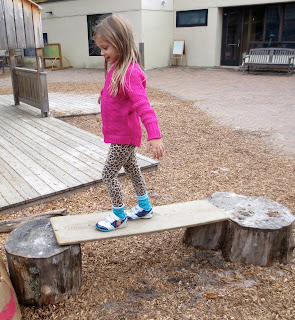Our five senses study that began the year has fueled a "growing" kindergarten interest in the human body. A variety of fiction and non-fiction books has helped us to raise and gather questions as we begin this new study.
- What body part is that?
- Why do we have that...?"
- How does it work?
- What bone is that?
- What is made out of?
- How do we grow?
- Why do we grow?
- What does the brain do?
Our time together outside has also created space for children to bake and cook and sell delicious food- at exorbitant prices by the way. One $58 cake was especially yummy! The children have been working together creating recipes and taking information from library cookbooks to add to their imaginative ideas as they open restaurants and grocery stores outside.
 |
| "Would you like some food to eat? It's good and healthy! Have some pasta cake." |
 |
| Some pasta and sushi for the animals |
- How am I the same and how am I different from others?
- What can I do with my body?
- When do I feel my best? Why?
- What can I do to help my body to grow and be stronger?
 |
| One of the many things we can do with our body |
 |
Creating our skeleton costumes
for our annual Halloween Parade
|
 |
| "I know what that is! Those are muscles... and that's blood..that part sends messages to your brain." |
































